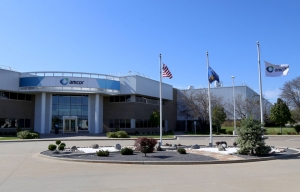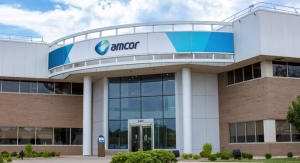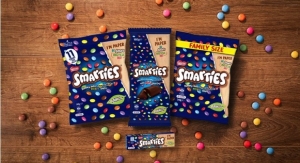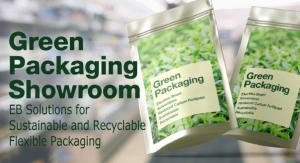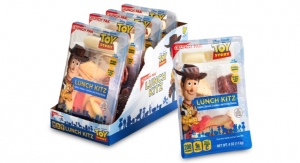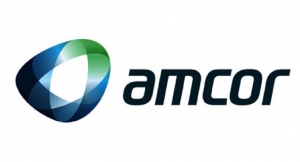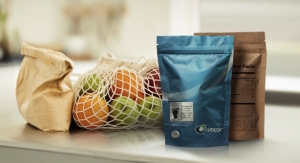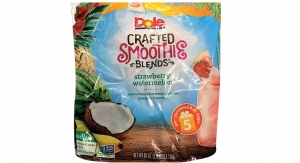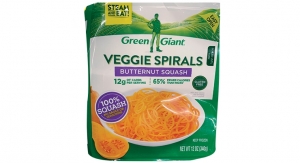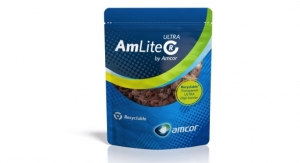David Savastano, Editor06.06.19
With the news that the US has given its OK to Amcor’s acquisition of Bemis Company, the merger will be official as of June 11, 2019. With that, the flexible packaging industry is about to see its largest consolidation to date.
Both companies are strong in flexible as well as rigid packaging. Headquartered in Neenah, WI, Bemis reported 2018 net sales of $4.1 billion and operating profit of roughly $470 million., and employs approximately 16,000 individuals worldwide. Amcor reported fiscal year 2018 sales of $9.3 billion, profit after taxes of $724 million and nearly 35,00 employees.The merger itself benefits Amcor in North America, where Bemis had $2.7 billion in revenue, as well as in Latin America, where Bemis had $628 million in sales; Amcor has not traditionally been strong in the Americas.
In March 2019, Berry Global announced plans to acquire RPC Group, which specializes inplastic and recycled products for packaging and snon-packaging markets. Berry Global noted in its annlouncement that the combined company would together have revenue of approximately $13 billion and approximately 48,000 employees.
In reality, though, the flexible packaging converter field remains fairly fragmented. Ink manufacturers noted that smaller converters are doing quite well.
“In contrast to the consolidation trend of larger market players, small ones, especially from emerging markets, tend to grow strongly over years while gaining more and more market share without consolidating,” Dr. Ralph Detsch, VP global technology at Siegwerk, said. “From our side, we are permanently adapting to the induced changes in the market and are always working on making the best out of it. Our company structure enables us to fully leverage our capabilities at a global scale and therefore grow with the winners of the industry.”
“The consolidation increases the globalization of the industry and quickly aligns similar applications in different parts of the world, so competition at all levels, including inks, becomes more global, too,” said Giuseppe Gianetti, director business development flexible packaging at hubergroup.
William Allen, North America Business Manager – Flexible Packaging for ACTEGA, said that consolidation is both a challenge and an opportunity.
“Large mergers make headlines, but in 2018, there were more than 30 other converter mergers or acquisitions that completely disrupted the supply chain and forecasting,” added Allen. “This is a trend that all flexible packaging suppliers need to embrace as a new normal.”
“We haven’t seen the true impact yet but consolidation will likely continue,” said Mark Hill, VP and R&D director for INX International Ink Co.
Tony Renzi, VP, product management packaging inks, North American Inks, Sun Chemical, noted that consolidation will impact flexible packaging ink suppliers, with one emphasis being on standardizing ink lines.
“As more and more consolidation takes place in the packaging industry, the converters have developed a commonality in their expectations from the ink supply base,” saidRenzi.“Due to the increasing size, scale and complexity of these consolidated businesses, they are looking to suppliers to drive standardization in products, processes and performance. This not only helps reduce complexity, but also improves cost and efficiency, and ultimately delivers value into those consolidation efforts. Converters will expect: simplification, standardization, cost reduction and innovation across their entire supply chain. From the ink suppliers point of view, the simplification of inks remains a key to aligning consolidated sites. Additionally, consolidation among converters increases the need for all supply chain partners to have the capability to scale-up rapidly, and support broad ranging businesses and applications as well as geographies.”
Deanna Klemesrud, global marketing director, packaging inks for Flint Group, said that. The ability to provide consistent high quality globally is becoming even more essential.
“Color, branding and aesthetics of product packaging continues to be a dominant factor in selling consumer goods,” said Klemesrud. “The label, wrap, carton, or pouch remains a significant marketing tool for brand owners who are looking for package print suppliers to deliver consistent, high quality, printed packaging. Global, consolidated accounts possess a strong argument to deliver such quality; with locations around the world that prescribe to the same set of specifications, a printer with multiple locations could align themselves with a global brand to deliver products that look and feel the same whether they are on a shelf in China, Africa, Chicago or Paris.With increasing demands from global brand owners for color equity across geographies and packaging substrates, it is essential to offer a color communication and service platform for these growing multi-national businesses.”
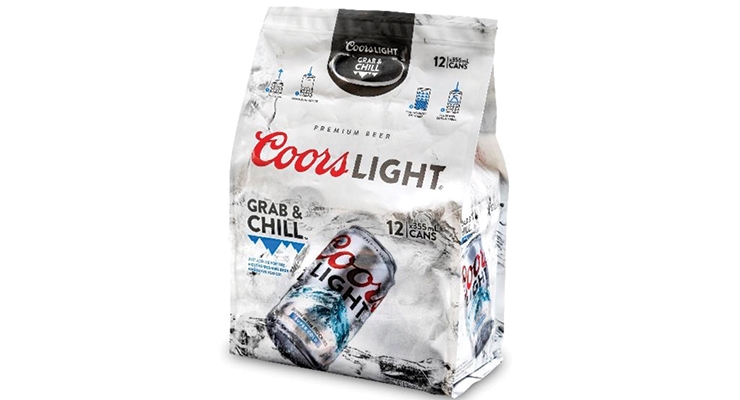
Molson Coors – 12 Pack Cooler Bag, printed by Bemis company, received the 2019 Highest Achievement Award, Gold AWARDS for Expanding the Use of Flexible Packaging and FOR Printing & Shelf Impact, and a silver Sustainability award from the Flexible Packaging Association. (Photo courtesy of FPA)
Both companies are strong in flexible as well as rigid packaging. Headquartered in Neenah, WI, Bemis reported 2018 net sales of $4.1 billion and operating profit of roughly $470 million., and employs approximately 16,000 individuals worldwide. Amcor reported fiscal year 2018 sales of $9.3 billion, profit after taxes of $724 million and nearly 35,00 employees.The merger itself benefits Amcor in North America, where Bemis had $2.7 billion in revenue, as well as in Latin America, where Bemis had $628 million in sales; Amcor has not traditionally been strong in the Americas.
In March 2019, Berry Global announced plans to acquire RPC Group, which specializes inplastic and recycled products for packaging and snon-packaging markets. Berry Global noted in its annlouncement that the combined company would together have revenue of approximately $13 billion and approximately 48,000 employees.
In reality, though, the flexible packaging converter field remains fairly fragmented. Ink manufacturers noted that smaller converters are doing quite well.
“In contrast to the consolidation trend of larger market players, small ones, especially from emerging markets, tend to grow strongly over years while gaining more and more market share without consolidating,” Dr. Ralph Detsch, VP global technology at Siegwerk, said. “From our side, we are permanently adapting to the induced changes in the market and are always working on making the best out of it. Our company structure enables us to fully leverage our capabilities at a global scale and therefore grow with the winners of the industry.”
“The consolidation increases the globalization of the industry and quickly aligns similar applications in different parts of the world, so competition at all levels, including inks, becomes more global, too,” said Giuseppe Gianetti, director business development flexible packaging at hubergroup.
William Allen, North America Business Manager – Flexible Packaging for ACTEGA, said that consolidation is both a challenge and an opportunity.
“Large mergers make headlines, but in 2018, there were more than 30 other converter mergers or acquisitions that completely disrupted the supply chain and forecasting,” added Allen. “This is a trend that all flexible packaging suppliers need to embrace as a new normal.”
“We haven’t seen the true impact yet but consolidation will likely continue,” said Mark Hill, VP and R&D director for INX International Ink Co.
Tony Renzi, VP, product management packaging inks, North American Inks, Sun Chemical, noted that consolidation will impact flexible packaging ink suppliers, with one emphasis being on standardizing ink lines.
“As more and more consolidation takes place in the packaging industry, the converters have developed a commonality in their expectations from the ink supply base,” saidRenzi.“Due to the increasing size, scale and complexity of these consolidated businesses, they are looking to suppliers to drive standardization in products, processes and performance. This not only helps reduce complexity, but also improves cost and efficiency, and ultimately delivers value into those consolidation efforts. Converters will expect: simplification, standardization, cost reduction and innovation across their entire supply chain. From the ink suppliers point of view, the simplification of inks remains a key to aligning consolidated sites. Additionally, consolidation among converters increases the need for all supply chain partners to have the capability to scale-up rapidly, and support broad ranging businesses and applications as well as geographies.”
Deanna Klemesrud, global marketing director, packaging inks for Flint Group, said that. The ability to provide consistent high quality globally is becoming even more essential.
“Color, branding and aesthetics of product packaging continues to be a dominant factor in selling consumer goods,” said Klemesrud. “The label, wrap, carton, or pouch remains a significant marketing tool for brand owners who are looking for package print suppliers to deliver consistent, high quality, printed packaging. Global, consolidated accounts possess a strong argument to deliver such quality; with locations around the world that prescribe to the same set of specifications, a printer with multiple locations could align themselves with a global brand to deliver products that look and feel the same whether they are on a shelf in China, Africa, Chicago or Paris.With increasing demands from global brand owners for color equity across geographies and packaging substrates, it is essential to offer a color communication and service platform for these growing multi-national businesses.”

Molson Coors – 12 Pack Cooler Bag, printed by Bemis company, received the 2019 Highest Achievement Award, Gold AWARDS for Expanding the Use of Flexible Packaging and FOR Printing & Shelf Impact, and a silver Sustainability award from the Flexible Packaging Association. (Photo courtesy of FPA)

